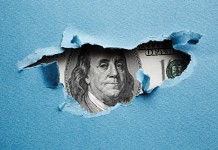After playing a prominent role in the recovery of euro area (EA) core inflation last year, prices of non-energy industrial goods (NEIG) have again become a drag on headline HICP inflation recently.
With the benefit of hindsight, the modest and short-lived recovery in EA tradable goods prices appears at odds with the magnitude of depreciation experienced by the euro exchange rate over 2014 and 2015.
While a delay in and dampening of currency moves with regard to the ultimate pass-through to consumers is a normal feature of the pricing chain, the anomalous size and persistence of the FX shock transmitted to headline inflation warrants close scrutiny.
Motivated by empirical evidence that suggests a more dominant role played by import prices over producer prices (PPI) in transmitting currency shocks to consumer prices recently, in this note, we examine the behaviour of the EA tradable goods price chain.
Our main conclusion is that import prices seem to have taken over the traditional role played by domestic producer prices in reverberating FX shocks along the price chain. As a result, the fairly rapid response of consumer tradable goods prices to the latest episode of currency depreciation came at the expense of the magnitude and persistence of its inflationary reverberation along the goods price chain.
History suggests that the EA PPI remains the most effective measure to transmit the impact of currency shocks along the goods price chain steadily. However, for reasons that may relate to the presence of a still-large output gap and the price-to-market strategies of firms, the PPI has played a much less significant role during the latest FX- led boom-bust cycle of EA NEIG prices than in the past (Figure 1).




















